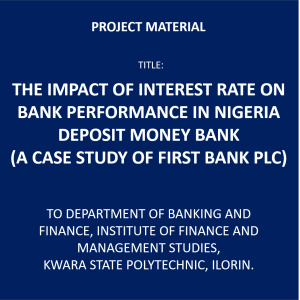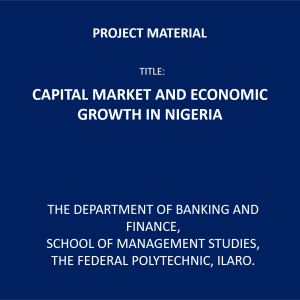No products in the cart.
The Impact of Micro Finance Bank in Reducing Poverty in Rural Area
₦10,150.00
The Impact of Micro Finance Bank in Reducing Poverty in Rural Area
- PROJECT YEAR: 2018
- NUMBER OF PAGES: 64
- INSTITUTE: DEPARTMENT OF BANKING AND FINANCE, INSTITUTE OF FINANCE AND MANAGEMENT STUDIES, KWARA STATE POLYTECHNIC, ILORIN
BACKGROUND INFORMATION ABOUT THE STUDY
According to Banda M. (2002) Micro Finance is about Providing Financial Services to the poor who are traditionally not served by the conventional financial institution. In Nigeria. The formal financial system provides services about 35% of economically active population while the remaining 65% are executed from the access to financial services. The small and medium scale enterprises falls among the 65% who are not catered for finally. The finance need of most of these small and medium scale enterprises are catered for the informal financial sector via non – governmental organization (N.G.O) friend money, other relatives as well as credit union.
In order to enhance financial flow to the poor Nigerians who want to start – up a small and medium scale business, the government has in the past initiative a series of public finance micro – credit programme and policies targeted at the poor. Some of such programme well Agricultural Credit Guarantee Scheme (ACGS). People Bank of Nigeria (PBN), Community Bank (CB), Non – Micro finance bank etc. All these are aimed at empowering Nigeria and local productions.
Micro finance is the main source of funding micro enterprises in Nigeria, Africa and even in other developing regions. The study is aimed at undertaking a primary surveying of micro finance institution in Nigeria, it will also examine the frame work of micro finance institution and also observed how the operation of micro finance are carried – out.
Institution have helped in conditioning poverty in rural area with regard to this research work. It will work make a critical education of micro finance institution and wind examination of rural area (concentration on level at poverty) and how the operation of the institution have helped in finding poverty.


